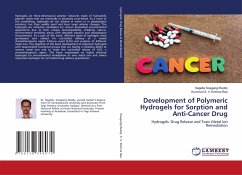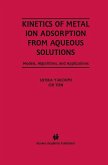Nowadays, sorption is becoming one of the fastest growing techniques for the treatment of industrial effluents, because of the availability of large variety of biomaterials. A lot of experiments are being carried out to find effective biomaterials for the sorption phenomenon. The mechanism and the effectiveness of the sorption can be investigated through comparative study of experimental results with theoretical models. In this book, the sorption process is divided into two categories i.e. batch and column processes. In batch: kinetic, intraparticle-diffusion, isotherm, thermodynamics and energy models are discussed, while in column: breakthrough curves, design and operational parameter models are explained. A brief introduction of Sorption Process Simulation (SORPS) tool developed by authors is also presented. This tool is applicable on both batch and column processes and more than sixty comparative studies can be performed. Therefore it is believed that the SORPS is a comprehensive tool and has potentials to be used for industrial and research purposes. This book is designed for engineers and scientists interested in applying mathematical models to investigate sorption processes.
Bitte wählen Sie Ihr Anliegen aus.
Rechnungen
Retourenschein anfordern
Bestellstatus
Storno








